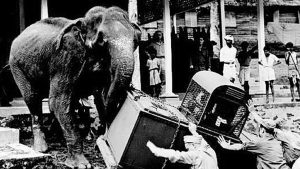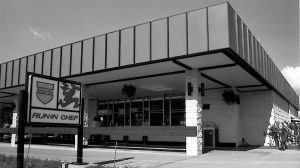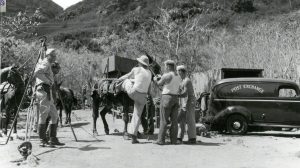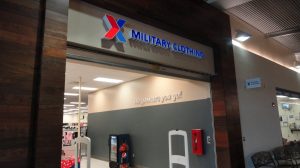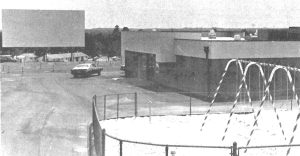History
Once upon a time, shoppers couldn’t find televisions or computers for sale anywhere in the Exchanges. Since 1949, the House Armed Services Committee and Department of Defense have regulated what the Exchange can sell. In 1986, the committee gave the Exchange permission to sell computers in 130 computer shops worldwide, which became known as “PowerZones”…
Read MoreOn Nov. 4, 1979, Iranian college students, who supported the Iranian Revolution, took over the U.S. Embassy in Tehran and held 52 American staff members who worked there hostage. The hostages were freed on Jan. 20, 1981, after 444 days of captivity. Three days later, associates at Germany’s Hainerberg shopping center greeted them as they…
Read MoreDid an elephant once work at a post exchange? Well, yes. And he got paid in bananas and bread. In 1944, the PX officer of the Southeast Asia Command headquarters during World War II moved a 2,600-pound electric refrigerator into a PX in India with the help of some Soldiers and an elephant named Karunavathi.…
Read MoreThe Exchange’s foray into name-brand restaurants came in 1977 when Baskin-Robbins opened its famous ice-cream shop at Edwards AFB, Calif. In 1984, Burger King became the first name-brand burger restaurant to join the AAFES family, opening 185 BKs throughout the world on Army and Air Force installations. The first one was at Ansbach, Germany. Other…
Read MoreThe Army & Air Force Exchange Service dished up its first school lunches back in 1955 when school cafeterias opened on military installations in the United Kingdom. In 1980, the Exchange was designated the sole school feeding authority for the Army and Air Force. In 2019, the Exchange served 2.6 million meals in 76 Department…
Read MoreIn 1965, the Army & Air Force Exchange Service took over a handful of PXs from the Navy in Vietnam the day after Christmas. At the height of the war in the late 1960s, the Exchange served American Warfighters with 50 major stores, 1,800 concessions and 180 food facilities, from cafeterias to snack wagons. On…
Read MoreIn its 125-year history, America’s Warfighters could always rely on the Exchange to be there for them, regardless of whether the “stores” were tents, pack mules, bamboo huts, mobile trucks, boats, choppers or spacious modern malls. In fact, the organization remains as relevant today as it was on the open frontier more than a century…
Read MoreThroughout most of the Exchange’s history, troops could buy military uniforms in the main stores, but the Army and the Air Force also carried them in their own outlets. To cut costs and combine operations, the military turned operations of its clothing stores over to the Exchange. During March through May 1976, the Exchange assumed…
Read MoreThroughout its 125 years, the Army & Air Force Exchange Service has offered just about any kind of service customers wanted. During the 1950s, Exchange concessionaires at Fort Hood and Fort Huachuca operated horseback riding schools. The Exchange even provided a merry-go-round for military children at Harmon AFB in Newfoundland, Canada. At Fort Dix in…
Read MoreThroughout the Exchange’s history, main stores—post exchanges, base exchanges, PXs, BXs, whatever the troops called them—have changed from rudimentary tents and not-so-well-lit rooms to the most modern shopping malls that rival those in the private sector. Here is a sampling of what today’s main stores looked like years ago. Find more in the “PXs of…
Read More


